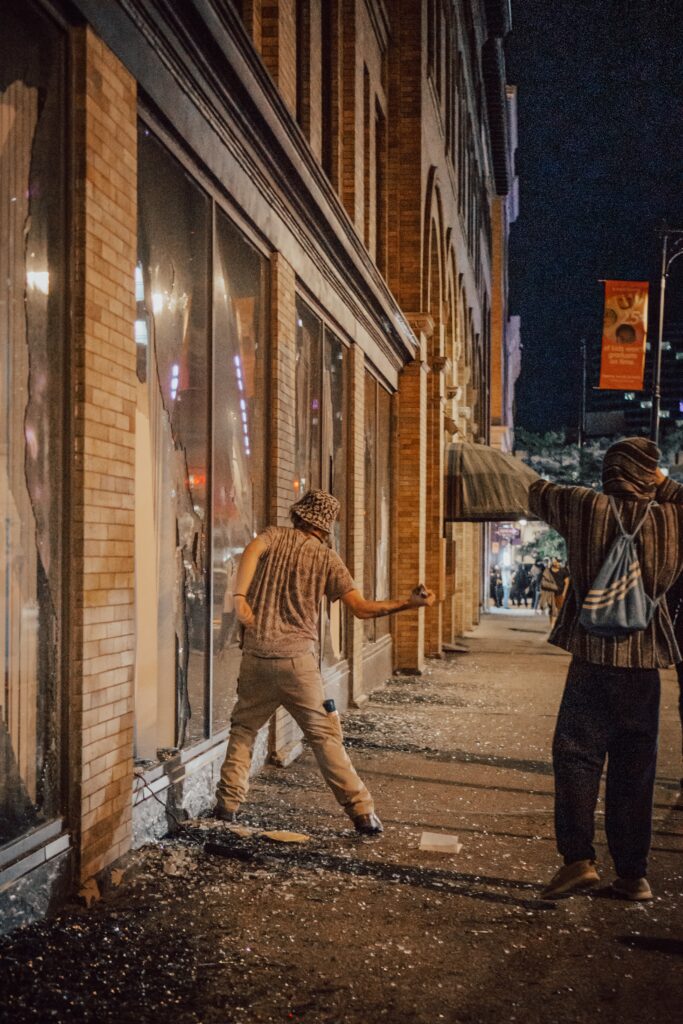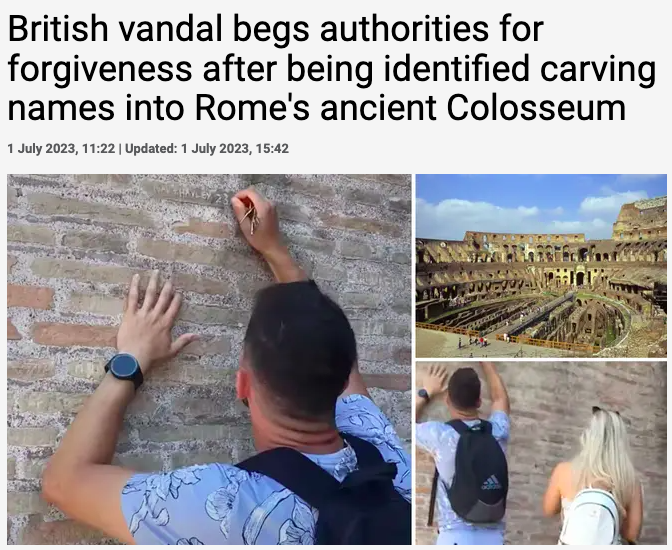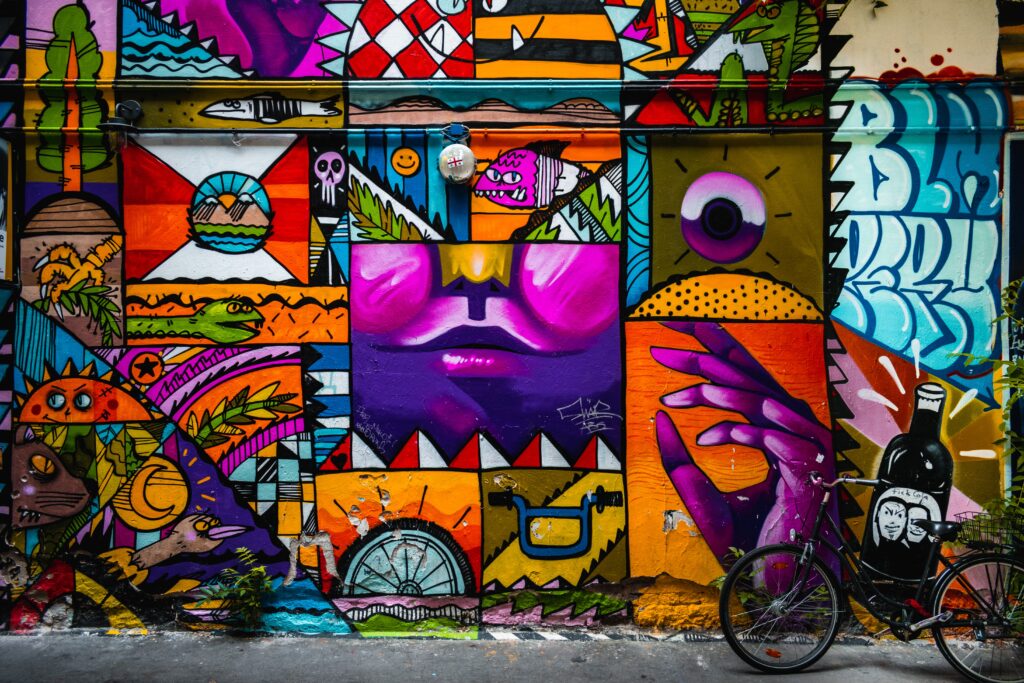ช่วงที่ผ่านมามีเรื่องที่ฮือฮาและถูกกล่าวถึงในโซเชียลกันอย่างแพร่หลาย คือเรื่องที่นักท่องเที่ยวชายมือบอนไปสลักชื่อตนเองบนกำแพงโคลอสเซียม ซึ่งเป็นหนึ่งในสิ่งมหัศจรรย์ของโลกที่มีอายุเก่าแก่ เกือบ 2,000 ปี จากกระแสนี้ทำให้เราอยากจะนำเสนอคำว่า “Vandalism” ใครอยากรู้ว่าแปลว่าอะไรมาอ่านบทความกันเลยค่ะ ระดับความยาก: 2

I recently spent a week driving around parts of Isan. Great trip! My friend is writing the Isan section of the Lonely Planet Thailand guidebook for 2024. She doesn’t like driving so I was basically her “chauffeur,” which is a fancy word for “driver,” haha.
One of the highlights was visiting Pha Taem National Park. It’s low season now, so some areas in the park are closed for maintenance. But the visitor center for the cave paintings was open. We were very impressed with the quality of the facilities, and the views are stunning.
There are 4 sites below the visitor center where you can see paintings. You can reach the sites via a mostly concrete trail that starts near the visitor center and takes you down the cliff. It is amazing to think that the paintings of people, fish and fishing baskets are thousands of years old.
A Bad Sign
One thing I noticed is signs at every site asking people not to draw or carve on the walls. This suggests that some (stupid) visitors had done some very stupid things. It makes you wonder, “Why?”
Can you think of a word that means the opposite of “maintenance”? One word is “vandalism.”
Stupidity is Everywhere
Unfortunately, vandals are everywhere. Last month in Rome, a British tourist was caught on video with his girlfriend carving their names on the Colosseum, which is one of Italy’s most famous tourist attractions. If he is convicted, he might have to pay a fine of over 500,000 baht and/or spend time in jail.

In Australia, vandals painted over cave art that was over 20,000 years old. The paint could not be removed without ruining the art.
Something similar happened in Chile 5 years ago.
There are too many examples of tourists doing terrible things. I think we all agree we should be thoughtful tourists and not act like fools when we travel.
Art or a Crime?
Not all vandalism is caused by tourists.
One way to understand “vandalism” is that it is when you destroy property that isn’t yours.
But not everyone agrees what qualifies as vandalism. If you ruin ancient cave art, you’re a vandal. But what about graffiti? Most of the graffiti you see was created by people who are breaking the law by painting on walls that someone else owns without permission.

Some people would say graffiti is “art.” Some people think, no, graffiti is “vandalism.” Is “tagging” (slang for graffiti) a dirty wall next to an expressway as bad as tagging the wall of a new house or office building?
What do you think: Is graffiti that is beautiful “vandalism”?
คำศัพท์ที่น่าสนใจในบทความ
- maintenance (n) การรักษาสภาพ, การผดุง, การทะนุบำรุง, การดูแลรักษา
- impressed (vi) ประทับใจ, ซาบซึ้งใจ, จับใจ, ติดอกติดใจ, ตรึงใจ,
- facilities (n) สิ่งอำนวยความสะดวก, โรงงาน, สิ่งก่อสร้าง (อเมริกัน)
- stunning (adj) น่าประหลาดใจ, น่างงงวย, น่าทึ่ง, สวยล้ำเลิศ, ยอดเยี่ยม, ล้ำเลิศ
- site (n) สถานที่ตั้ง, ไซต์งาน, สถานที่เกิดเหตุการณ์
- via (prep) โดยทาง, ด้วยวิธีการ
- vandalism (n) การทำลายทรัพย์สินโดยเฉพาะของรัฐอย่างไร้เหตุผล
- vandal (n) ผู้ทำลายทรัพย์สินโดยเฉพาะของรัฐอย่างไร้เหตุผล
- ruin (vt) ทำให้พินาศ, ทำลาย
- destroy (vt) ทำลาย, ผลาญ, ทำให้พัง, ทำให้สิ้นซาก,
- qualify (vi) เหมาะสม, มีคุณสมบัติเหมาะสม
![]() มีคำศัพท์คำไหนที่อยากให้อธิบายด้วยภาษาอังกฤษอีกบ้างไหมครับ ส่งเมลมาที่ [email protected] ได้เลยครับ
มีคำศัพท์คำไหนที่อยากให้อธิบายด้วยภาษาอังกฤษอีกบ้างไหมครับ ส่งเมลมาที่ [email protected] ได้เลยครับ
![]()



